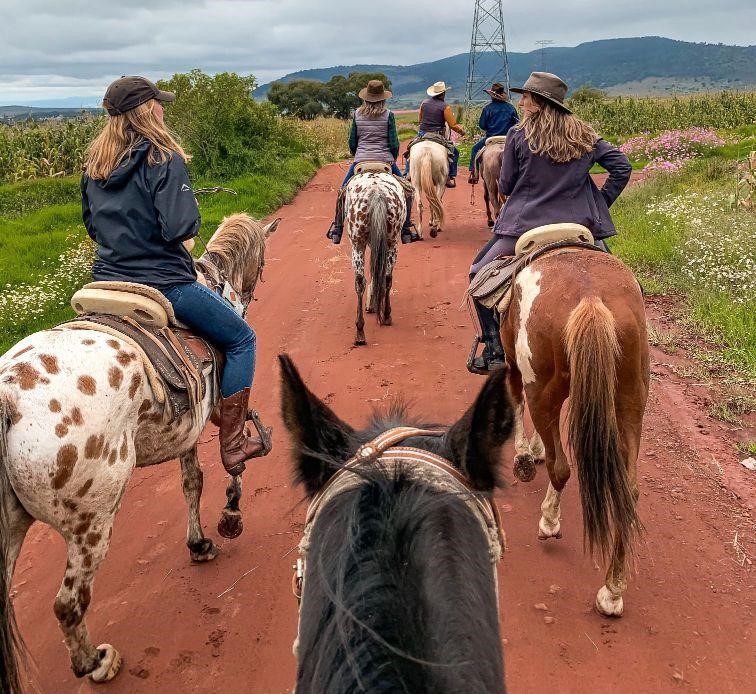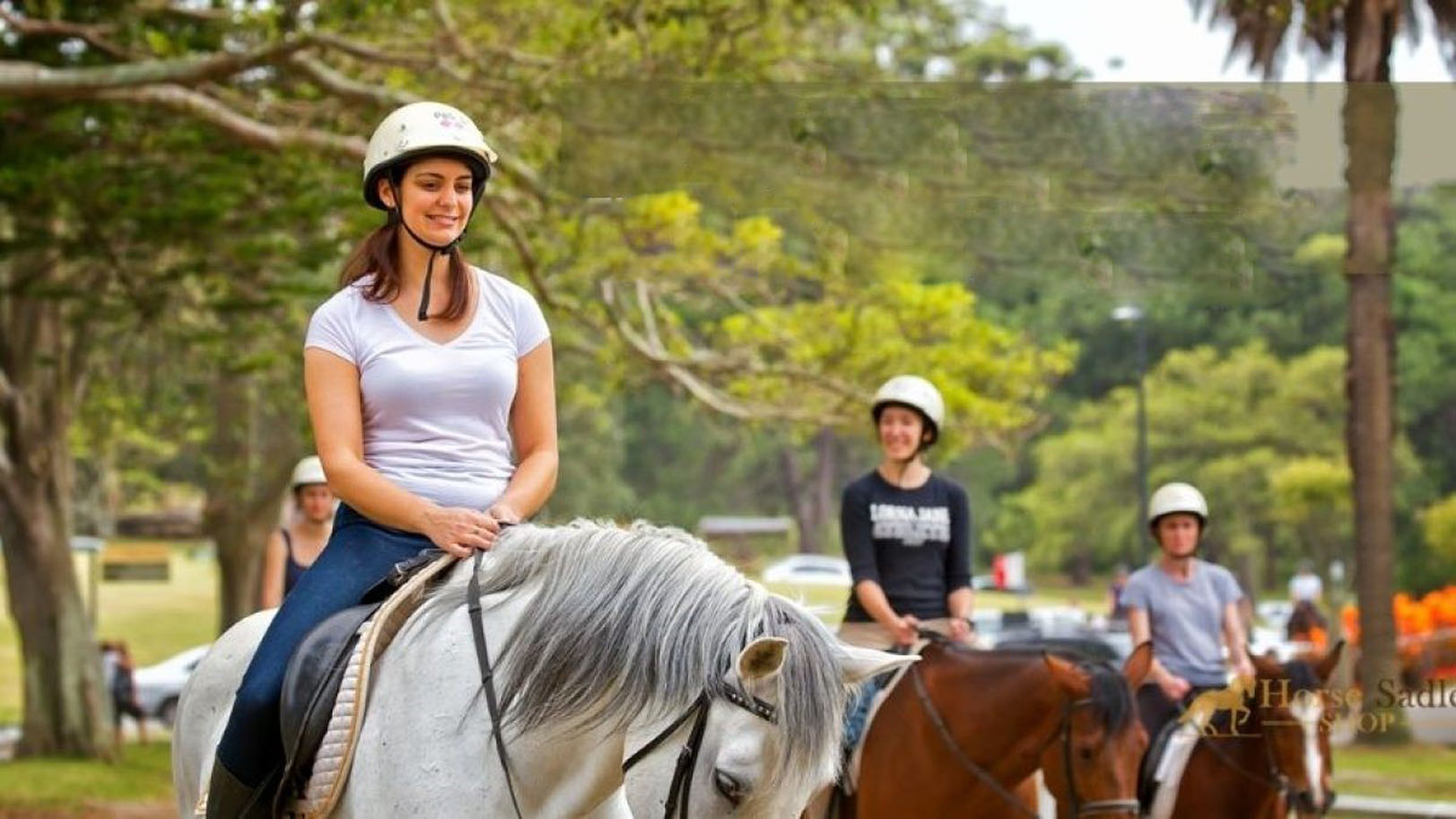When riders join together to explore the trails, fields, and countryside, there's an extra special alchemy in the air in the world of equestrianism. A group's appreciation for these magnificent animals, excitement, and companionship are all enhanced by group horseback riding.
But like with any group activity, there are some manners, dos and don'ts to follow in order to make sure that everyone has a fun and safe time. So grab a seat; we're going to take a tour through the fundamentals of group riding manners.
The Do’s
1. Communicate
The foundation of safe and pleasurable group horseback riding is effective communication. Establish a system of signs or verbal cues with your other riders before you set out on your tour. To provide crucial communications, these can be as basic as hand gestures, spoken instructions, or even whistle signals. A hand waved in a different direction could signify a change in direction, whilst a hand raised could suggest a halt or stop. Effective communication guarantees that all members of the group are in agreement and capable of handling any eventuality.
2. Preserve Appropriate Distance
Horses must keep a safe distance from one another in order to avoid crowding and other mishaps. Try to maintain a minimum of one horse length between each animal in the group as a general guideline. This offers each horse and rider their own area, allowing them to move freely and pleasantly, while also lowering the chance of collisions. Keep a safe distance at all times by observing the body language of the horses in front and behind you and changing your position as necessary.
3. Follow the Leader
When riding in a group, it's critical to heed the advice of the designated trail boss or leader. Usually, this person is in charge of deciding on the route, pacing the group, and making sure everyone stays together the entire ride. You may contribute to keeping the group cohesive and guarantee a smooth and orderly trip by paying attention to their indications and directions. Put your faith in the leader's wisdom and expertise, and be ready to follow their guidance through any difficulties or roadblocks that may arise.
4. Pay Attention to Your Environment
Always be aware of potential dangers and obstructions in your path when you are riding. This can include loose pebbles, uneven ground, low-lying trees, or wildlife. By yelling out or utilising pre-established signs, warn the group of any possible threats, and then cooperate to safely avoid them. You may assist prevent accidents and make sure that everyone involved has a smooth and enjoyable journey by being alert and aware of your surroundings.
5. Remain calm and at ease
Horses are highly sensitive creatures that are able to sense the feelings and energy of their riders. It's critical to remain confident, at ease, and relaxed in the saddle in order to preserve a positive environment within the group. Breathe deeply, let go of tension in your body, and give your horse a calm, confident vibe. You may reassure your horse and create a pleasant riding experience for both of you by staying calm and cool.

The Don’ts
1. Never Take Over Without Approval
Without their express consent, passing other riders might interrupt the group's flow and perhaps result in confusion or accidents. Prior to moving forward, always indicate your intention to pass and wait for the rider in front of you to confirm. Give the rider ahead plenty of room to manoeuvre in order to guarantee a seamless and secure overtake. In the group, respecting each other's space and speed encourages cooperation and respect for one another.
2. Avoid Hurrying or Sprinting in Congested Places
It's crucial to put safety before speed in congested locations and on small routes. Riding quickly or galloping in such areas raises the possibility of running into barriers, wildlife, or other trail users in an accident. Rather, keep your pace at a steady walk or trot so that you can respond rapidly to any unforeseen circumstances that may occur. You may contribute to making the route safer and more pleasurable for everyone by being cautious and restrained in crowded sections.
3. Attend to the Needs of Your Horse
The welfare of your horse should always come first when riding in a group. It's important to keep in mind that horses need regular intervals to rest, drink, and graze as needed. Throughout the ride, keep a close eye on your horse's behaviour and physical state, and be ready to modify the pace or route to suit their demands. You can guarantee your horse's comfort and delight throughout the ride while fortifying your relationship with them by giving them the right care and attention.
4. Make Sure No One Is Left Behind
Staying together as a cohesive group is one of the fundamental principles of group horseback riding. Make sure that nobody gets lost or left behind by keeping a constant watch on the group. At designated rest breaks or trail intersections, slow down or stop if a rider gets lost or has trouble keeping up so they can catch up. Throughout the ride, try to keep a spirit of togetherness and camaraderie alive by helping and supporting other cyclists as needed.
5. Avoid Using Too Much Equipment or Tack
Avoid piling your horse with too much tack or equipment when getting ready for a group ride. Your horse may become uncomfortable and distracted by too much equipment, which will lower their performance and enjoyment of the ride. To provide optimal comfort and safety, choose minimalistic tack that is fitted and maintained correctly. Maintaining your horse's equipment simple and useful will help you reduce distractions and maximise performance.
Conclusion
In conclusion, everyone engaged will have a safe, joyful, and peaceful experience if this group horse riding etiquette don’ts are followed. You can maximise your time in the saddle and generate priceless experiences that last a lifetime by putting communication, safety, and your horse's welfare first. So grab your buddies, get in your saddle, and go out on your next horseback trip with courage and friendship!

